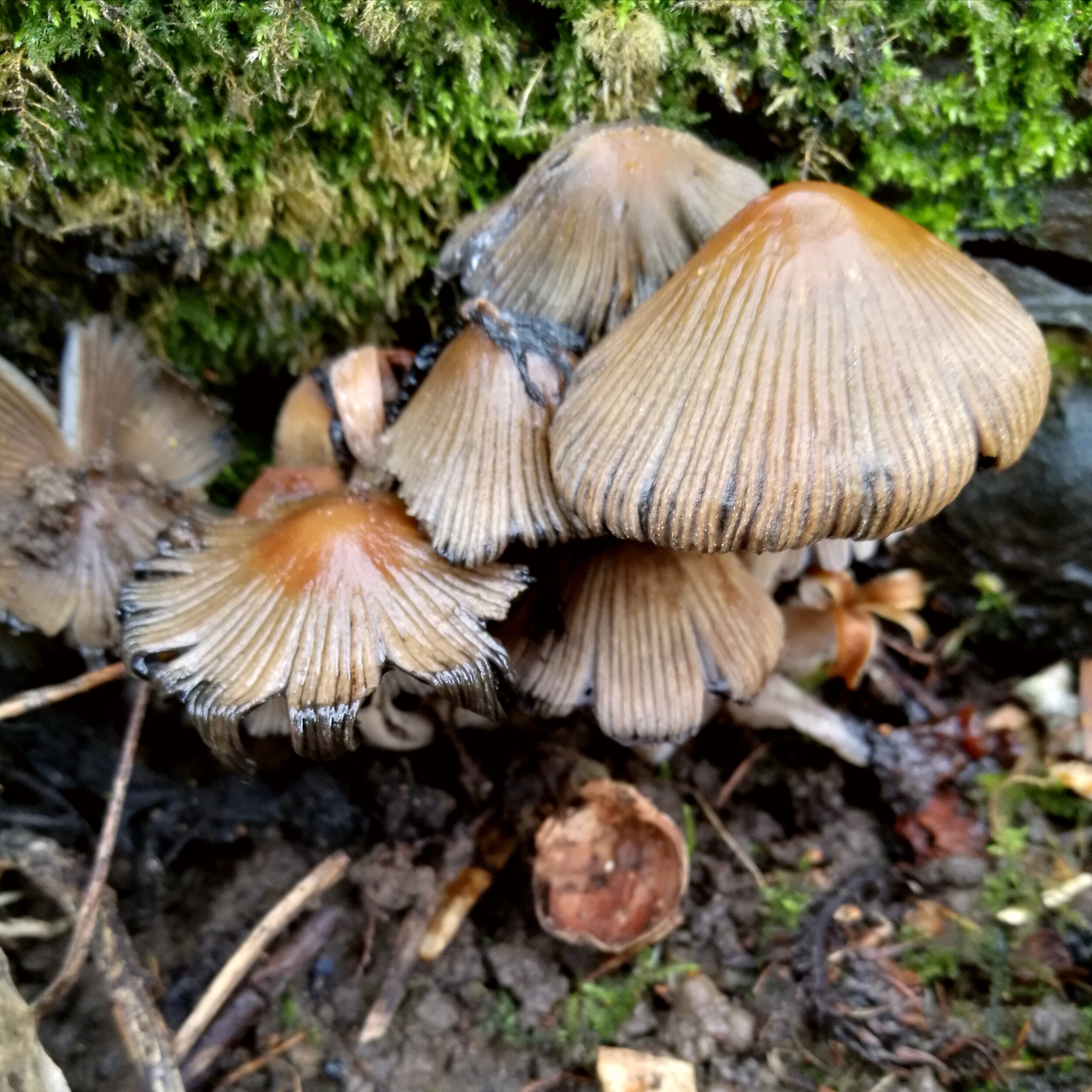Common Inkcap (Coprinopsis atramentaria)
A sure sign of rotting wood lurking beneath the surface of the soil, common inkcaps make a fascinating study for children new to the discovery of mushrooms. They are easy to identify and easy to find, being a common mushroom across the UK and beyond. They also make a good study for drawing, most memorably if the ink used to sketch them is brushed directly from the mushroom itself. There is nothing delectable-looking about them, which is just as well - these are highly toxic if consumed with alcohol, even if the alcohol is consumed up to three days either side of eating the mushroom. This has led to the alternate common name: Tippler’s Bane.
What it looks like
Look for Common Inkcaps from spring through to early winter. They appear most commonly during or after rainy weather. Inkcaps begin with an egg-shaped bulb, 3-7cm in diameter, then a stalk pushes it upwards. They almost always appear in tufts. The mushroom begins pale tan/grey, more brown towards the centre (or point) of the cap, and smooth with fine, dark grooves radiating down the cap. The cap will open slightly at maturity, but remain ovoid. As the mushroom begins to decay, the rim will split outwards and become bell-shaped. The gills meanwhile (which begin as white) liquify, turning deep black, and drip away from the rim of the mushroom until the whole of the cap is consumed. The stalk is white, fragile and hollow. They can be up to 20cm in total height, but are often smaller.
Uses
This mushroom is NOT edible. It is toxic especially if consumed with (or within days of consuming) alcohol. The black ‘inky’ liquid of the decaying gills can in fact be used as ink. Historically, inkcap ink was used to write important documents, to guard against forgery.


